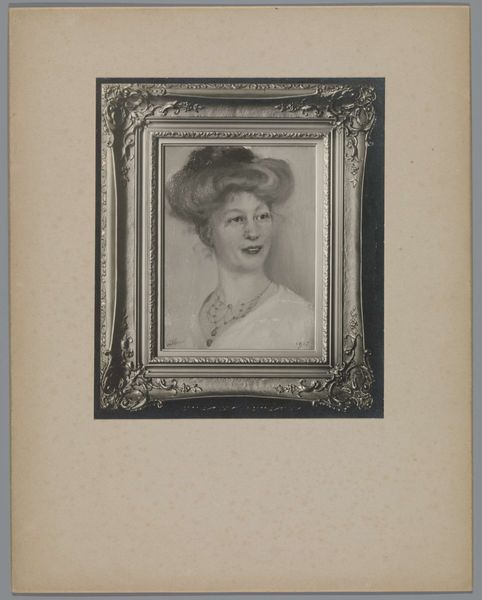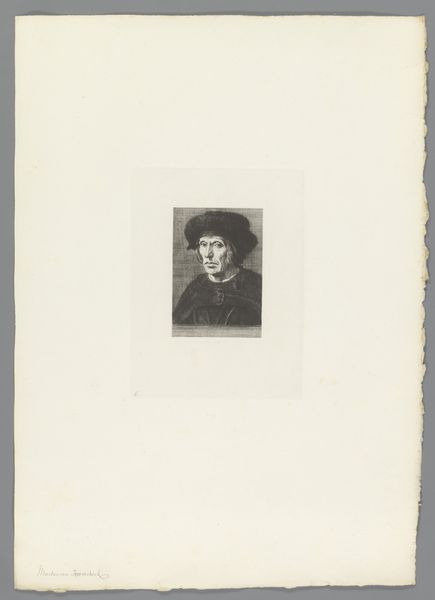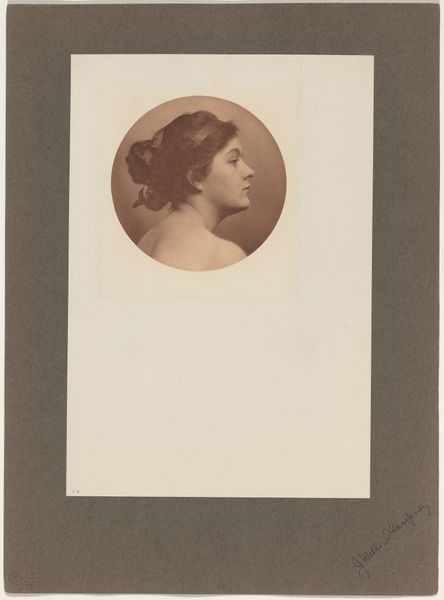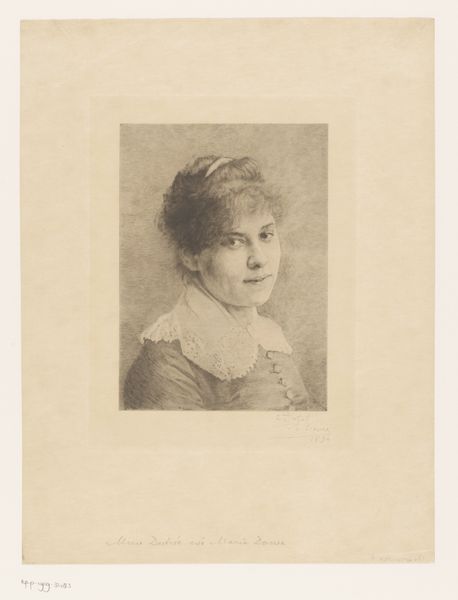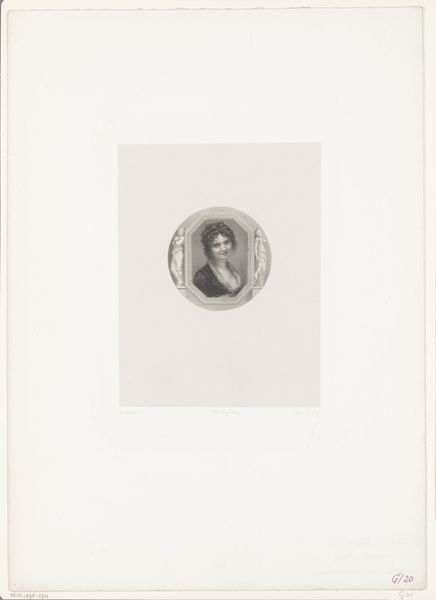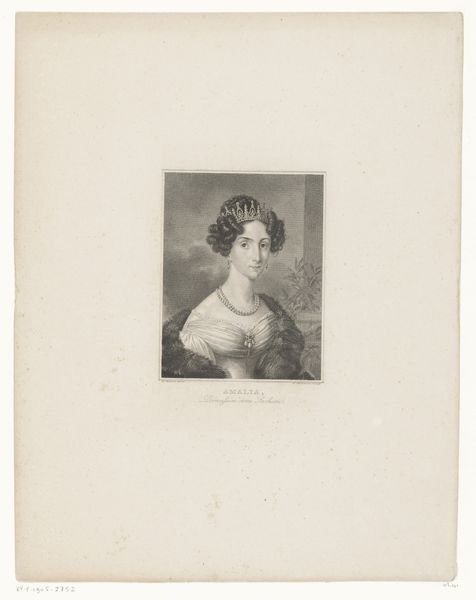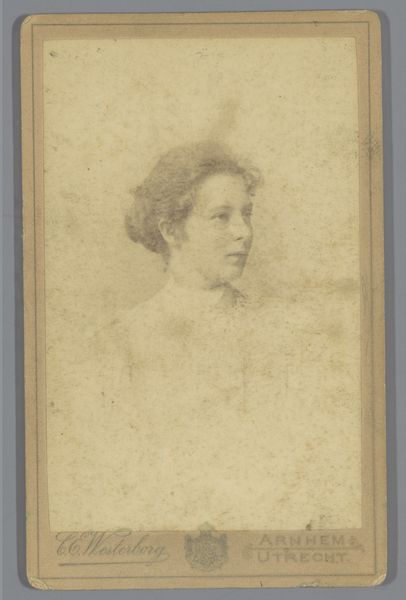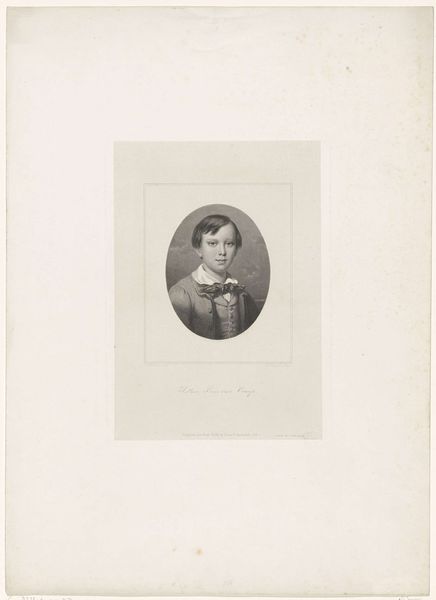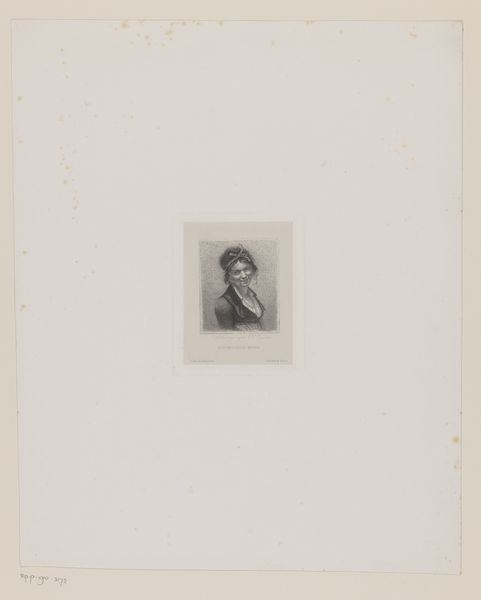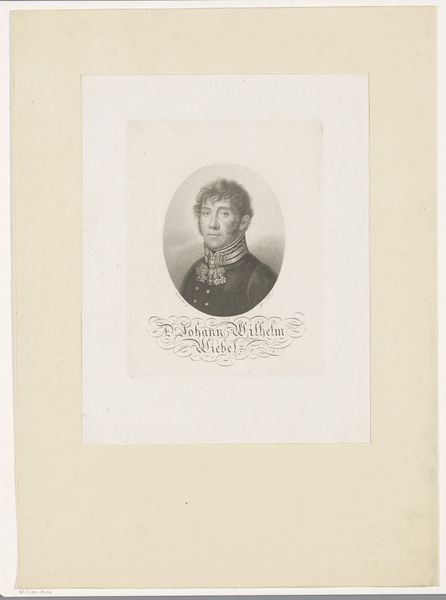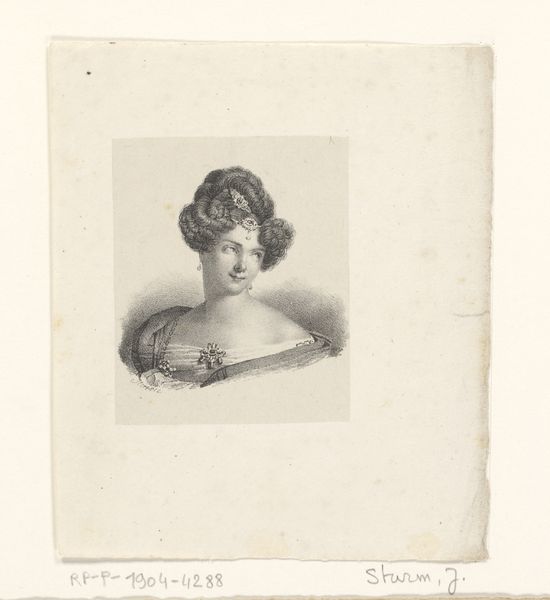
Reproductie naar schilderij van Willem Witsen van een portret van een vrouw c. 1860 - 1915
0:00
0:00
anonymous
Rijksmuseum
print, photography
#
portrait
# print
#
photography
#
realism
Dimensions: height 193 mm, width 179 mm, height 347 mm, width 274 mm
Copyright: Rijks Museum: Open Domain
Curator: Here we have "Reproductie naar schilderij van Willem Witsen van een portret van een vrouw," which translates to "Reproduction after painting by Willem Witsen of a portrait of a woman." This photogravure dates from approximately 1860 to 1915. Editor: My immediate impression is one of somber elegance. The monochrome tones and the subject's serious profile, encased in that ornate frame, create a very contained, almost mournful mood. Curator: The tonality certainly contributes. Witsen, while known for his paintings, worked a lot with printmaking too. He exploited photogravure, a photographic process that transfers an image to a printing plate, rendering a rich range of tonal values in a way akin to painting. Editor: And look how the light falls! There's a striking contrast between the almost stark lighting on her face and the subtle gradations within the frame itself, creating this play of focus and peripheral detail. What do you think about the psychological space it evokes, the woman turned away? Curator: I find the turn intriguing. There’s a distancing effect; she's both present and unavailable, conforming to certain modes of representation in this period. Perhaps her gaze beyond us directs attention away from herself towards broader cultural contexts or aspirations absent from the frame? The realism reinforces this reading by embedding the subject in the actual social settings that shaped her image. Editor: Right. And it begs questions about who was commissioning such works. Was it about solidifying social status, reflecting an established class's own ideals of beauty and virtue? Also, is this a neutral replication or an ideological positioning? Curator: Very good questions, all deeply entwined. The photogravure reproduction makes art more widely accessible, yet inevitably transforms its significance. So a discussion of medium here transcends formalism, intersecting economic and class discourses defining art access during those periods. Editor: Yes, that interplay really is worth contemplating. For me, this close-up perspective has really enhanced the rich complexities contained within that solemn gaze and monochrome treatment. It suggests endless directions. Curator: Absolutely. Considering it not just visually but institutionally illuminates so many intersecting layers and considerations, it all accumulates toward a much deeper reading.
Comments
No comments
Be the first to comment and join the conversation on the ultimate creative platform.
